Namibia’s well-known red dunes take on a different aspect when rising above lush green grasses. This is the Namib Desert as you’ve never seen it before. Want to see it for yourself? Photographer Hougaard Malan reveals how to go about it and where to capture unforgettable images in Namib Rand.
The Namib Rand is a destination that can yield some of the most incredible photography that Africa has to offer, but it doesn’t give up its secrets easily. If you visit in the wrong season, wrong year or the wrong property, you will walk away empty handed. I’ve been visiting the Namib Rand for over a decade in search of photos. Through trial and error, I’ve learned what to do and what not to do.
There is a lot of confusion about what is or isn’t the Namib Rand due to the fact there is an official NamibRand Nature Reserve. Many people think that only the land within the reserve’s borders is the Namib Rand. But as the name makes clear, it is the eastern edge of the Namib Desert (i.e. Namib Rand vs NamibRand, the reserve). It thus stretches all along the Namib Dune Sea, but the very photogenic area is from the Tiras Mountains in the south to Solitaire in the north.
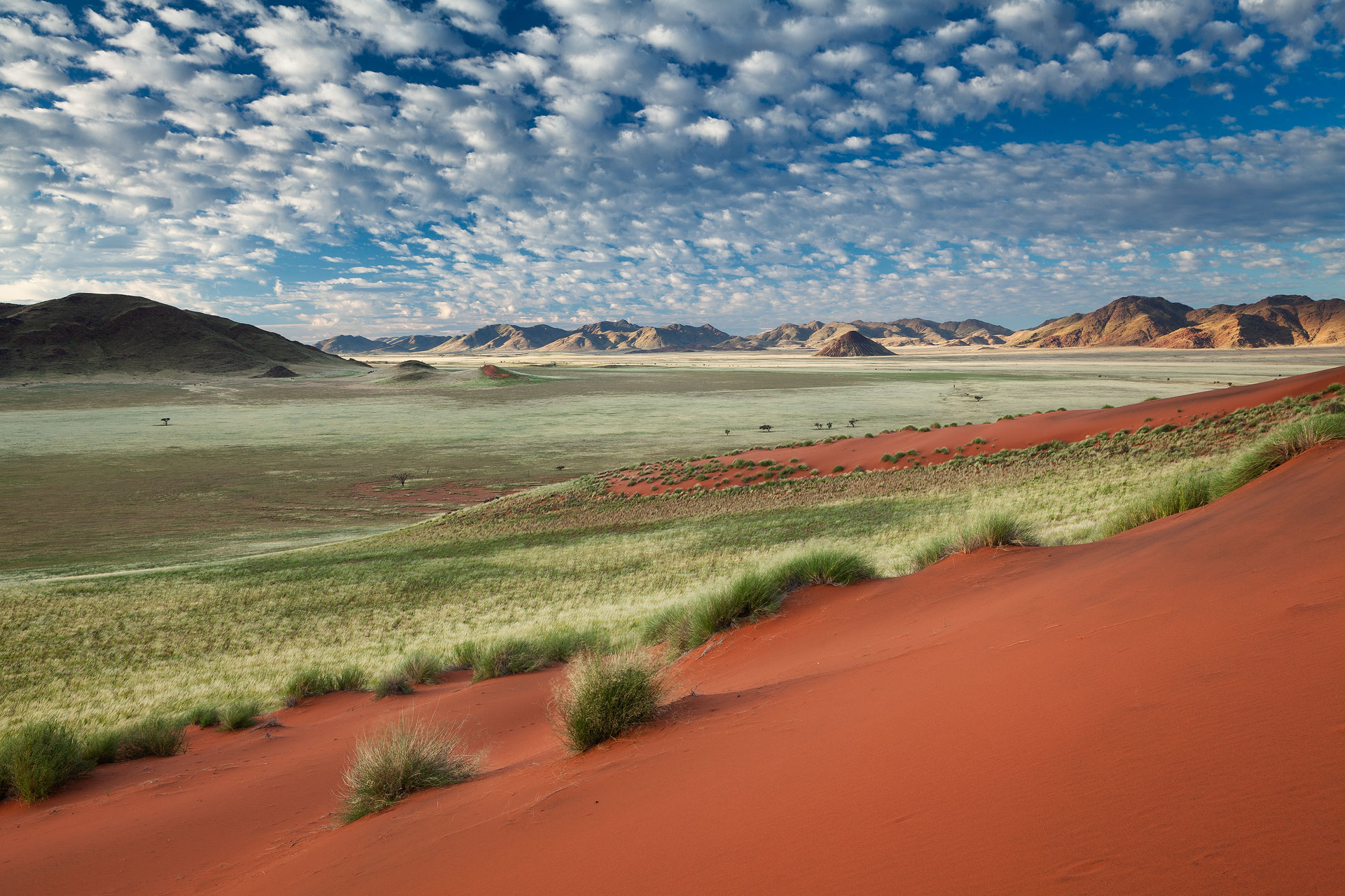
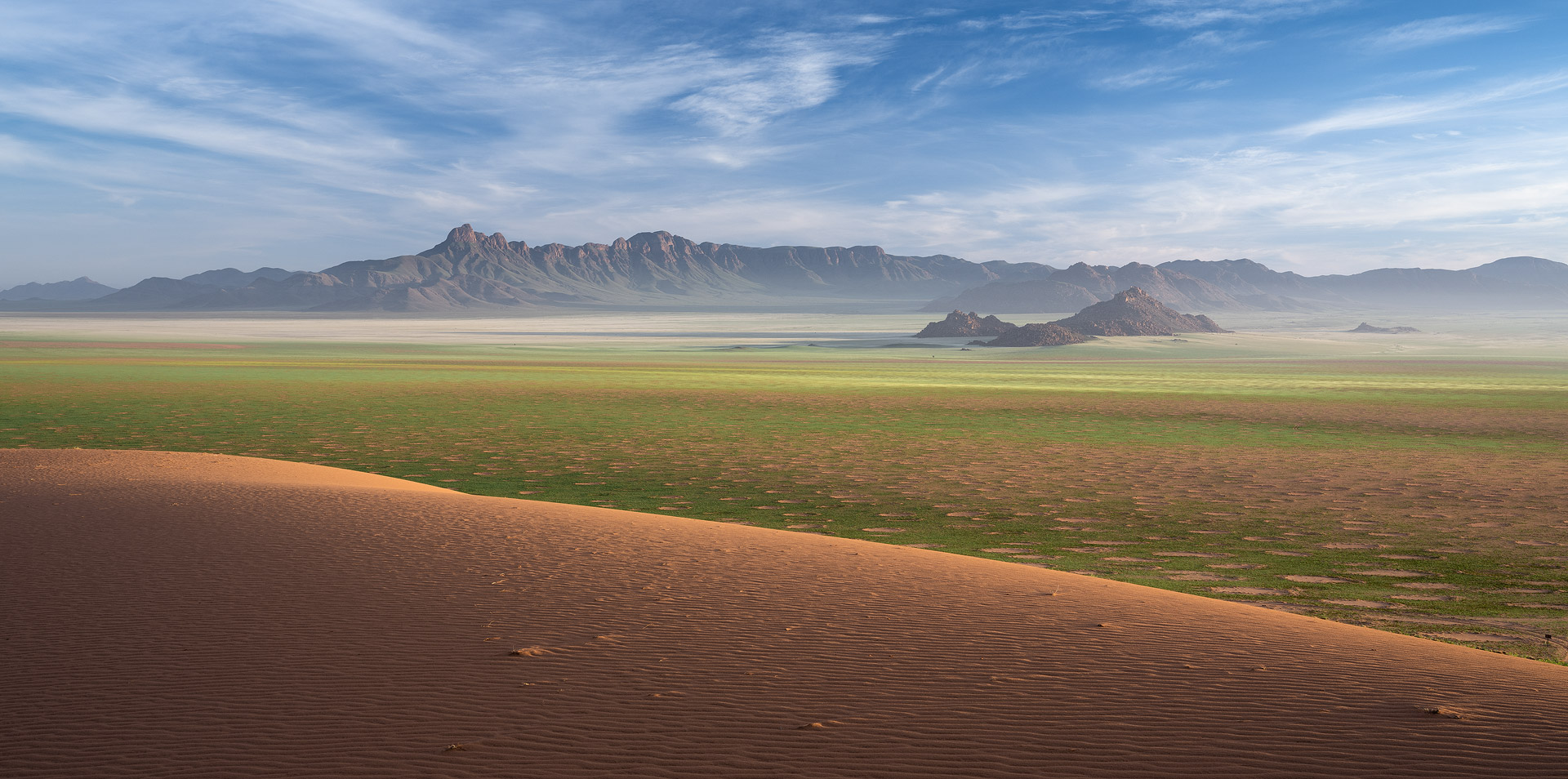
Namib Rand and ecotourism
The first thing to understand is how it fits into Namibia’s tourism environment. The Namib Rand has an incredible, vast, open simplicity to it, which plays a great role in what makes it so photogenic. Almost all of the Namib Rand used to be Karakul sheep farming area. But with surging tourism, the property’s tourism value far exceeds its agricultural value. It is steadily being converted back to parkland in what is one of the largest private rewilding efforts in the world, measured by land area. The Namib Rand offers open space like few other places on earth and so there is a lot of potential for high-end tourism. This is why there are a lot of very expensive lodges everywhere and few low-cost options such as camping.
The fragility of its grassy plains also play a great role in the type of tourism that land owners focus on. Drive across a plain and you will create a track that will remain for decades. Properties are thus extremely reluctant to let people self-drive as inevitably, despite everyone’s best efforts, someone will drive off road and scar the environment. So many people are working so hard to restore the land to its original condition that for most land owners it’s simply not worth the risk to let people self-drive.
If you decide to visit the Namib Rand, it is critical that you understand and respect this. Absolutely no off-road driving. Not even so much as a three-point turn in the middle of a track.

Look for the properties with self-drive routes, hiking trails and camp sites. Alternatively, look for lodges that run great SADC specials in low season and include drives in the package. There are some fantastic bargains to be found in late summer when the grass is green, the skies are dramatic and most Europeans are still too scared of the heat.
Also read: Southern Namibia after the rains
When to visit | February–June
For most landscapes, all you need to worry about is season, but the Namib has a dramatic year-to-year variation with its greater rainfall cycles. The period 2006–2012 was an amazing time to visit as valleys were carpeted with grass and the summer months brought dramatic skies. But 2014–2018 was barren and dry – no grass, no clouds. People get very offended when I say the Namib Rand is ugly in dry years, but it is a matter of context. This is a beautiful landscape that is always worth a visit, but for the purpose of landscape photos, you will be wasting your time in a dry year.
You cannot plan a photo trip to the Namib Rand far in advance!
We are currently in a wet cycle and the valleys of the Namib Rand are thus carpeted with grass. Based on the past, wet cycles last 4-6 years and the current cycle started in 2021, so we should still have 2–3 good years left. Do not plan your trip before the rain has fallen. The type of rain they get in the Rand (localised thunderstorms) can bless one property and spurn the adjacent one. Join the Reën in Namibia Facebook group and stay in touch with how the rainy season is going.
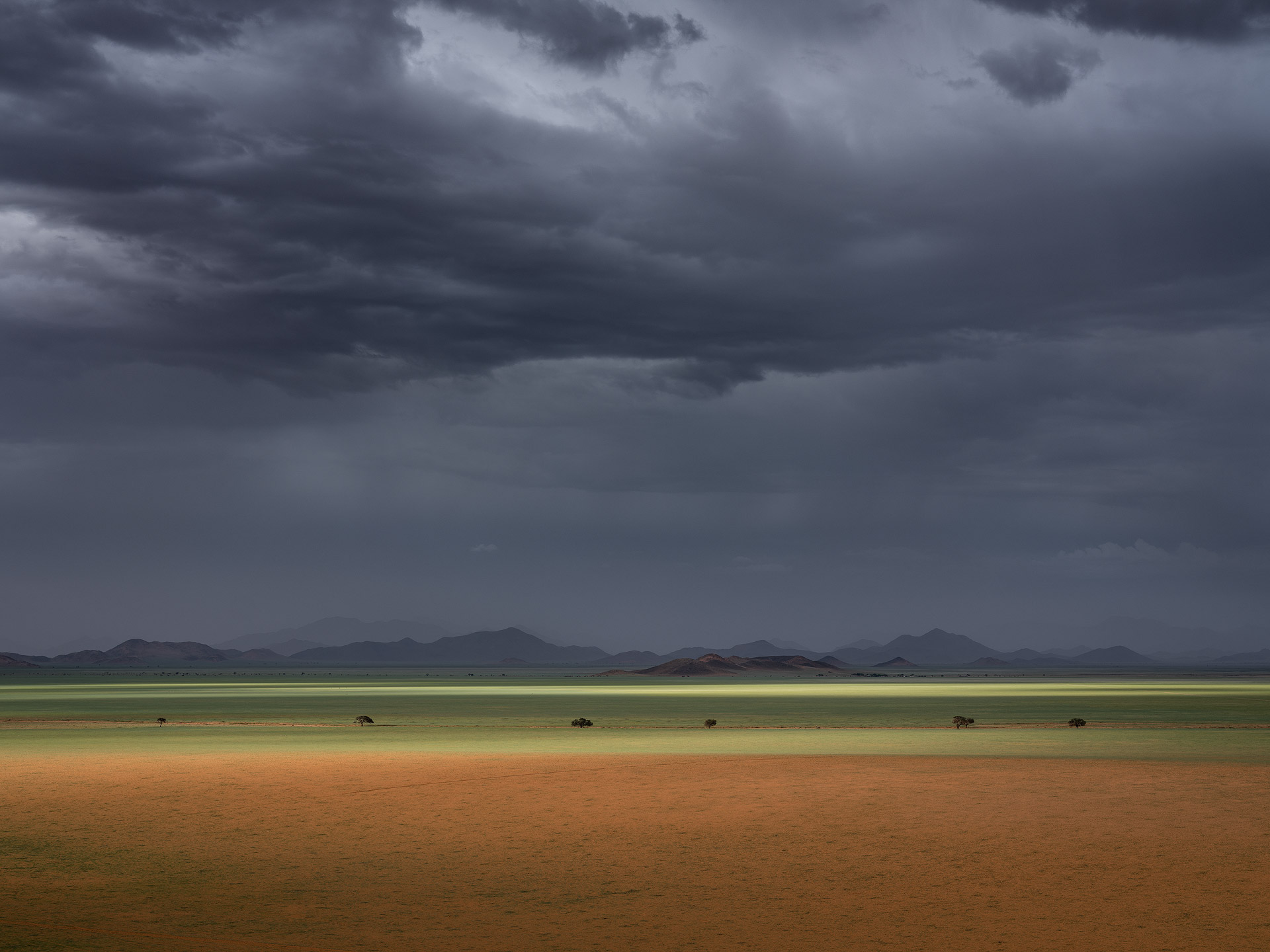
Rain normally falls in February and March, sometimes continuing into April. Once you see the rain has fallen in the desert, you can start planning your trip. If you choose a destination, contact them and ask them how their rainfall has been for the season and if they have any grass. The grass is absolutely everything, especially if you can get there while it’s still green.
Once the green is gone, the grass turns a beautiful ivory, which is still very well worth photographing.
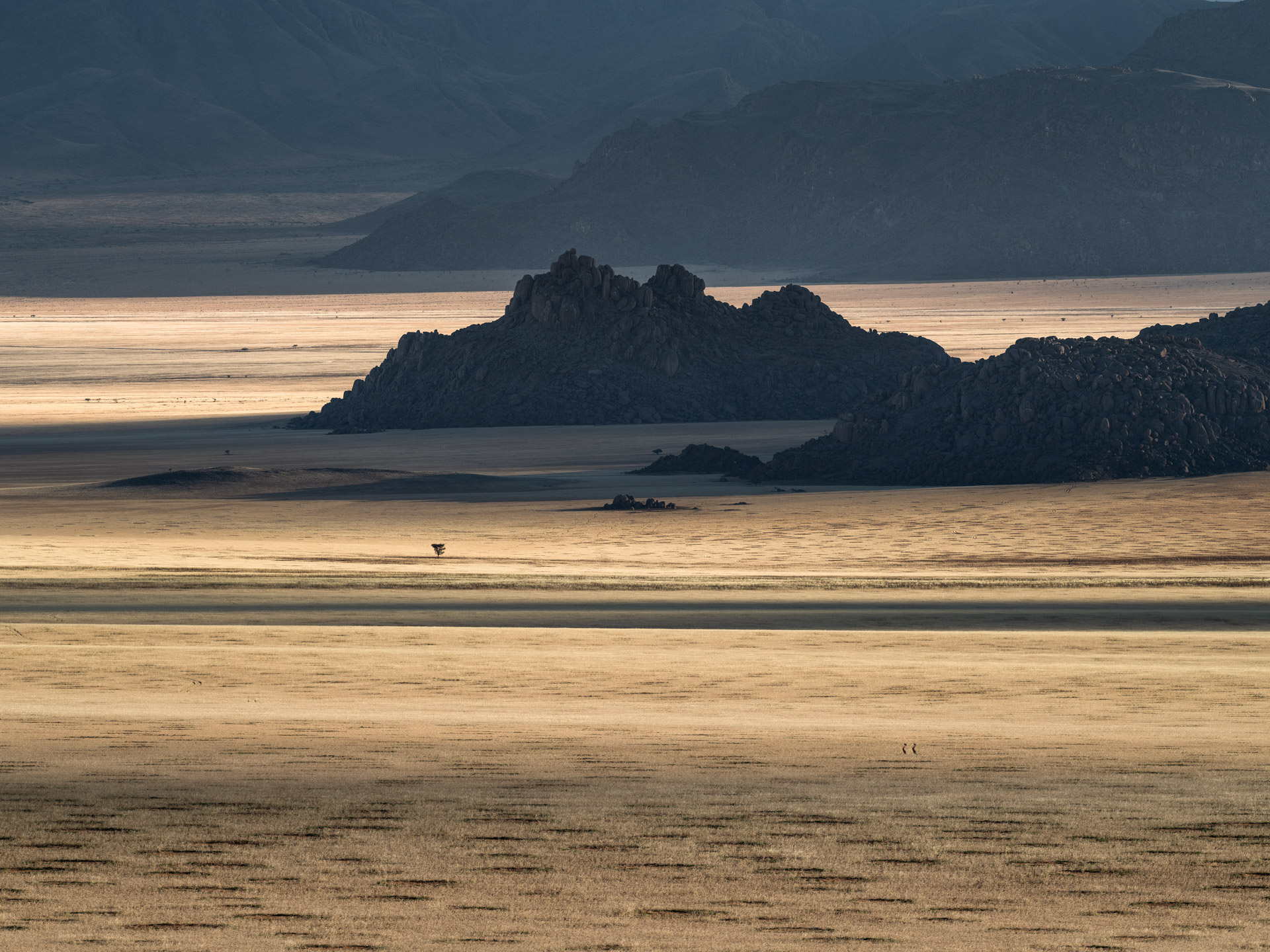
When not to go | August–January
The later winter months are usually cloudless, windy and hazy. Early and mid-summer is the same with unbearable heat.
Photo tips for Namib Rand
The Namib Rand is all about open space and the unique combination of dunes, grassland and mountains. Make the most of it by using these tips.
1. Viewpoints – It helps a lot to get some height above the landscape, so a hike up a hill or a dune is always worthwhile.
2. Sunlight – You don’t necessarily need sunlight, but there is nothing quite like low sunlight hitting that grass. Find a composition in advance and be ready for first/last sunlight on the land.
3. Go long – The best way to capture the Namib Rand’s scale and simplicity is not with a wide angle lens. A wide lens accentuates whatever is right in front of you and diminishes everything that is far away. Get your long lens out, find a distant dune belt or lone tree and wait for dappled or low light to make it stand out.
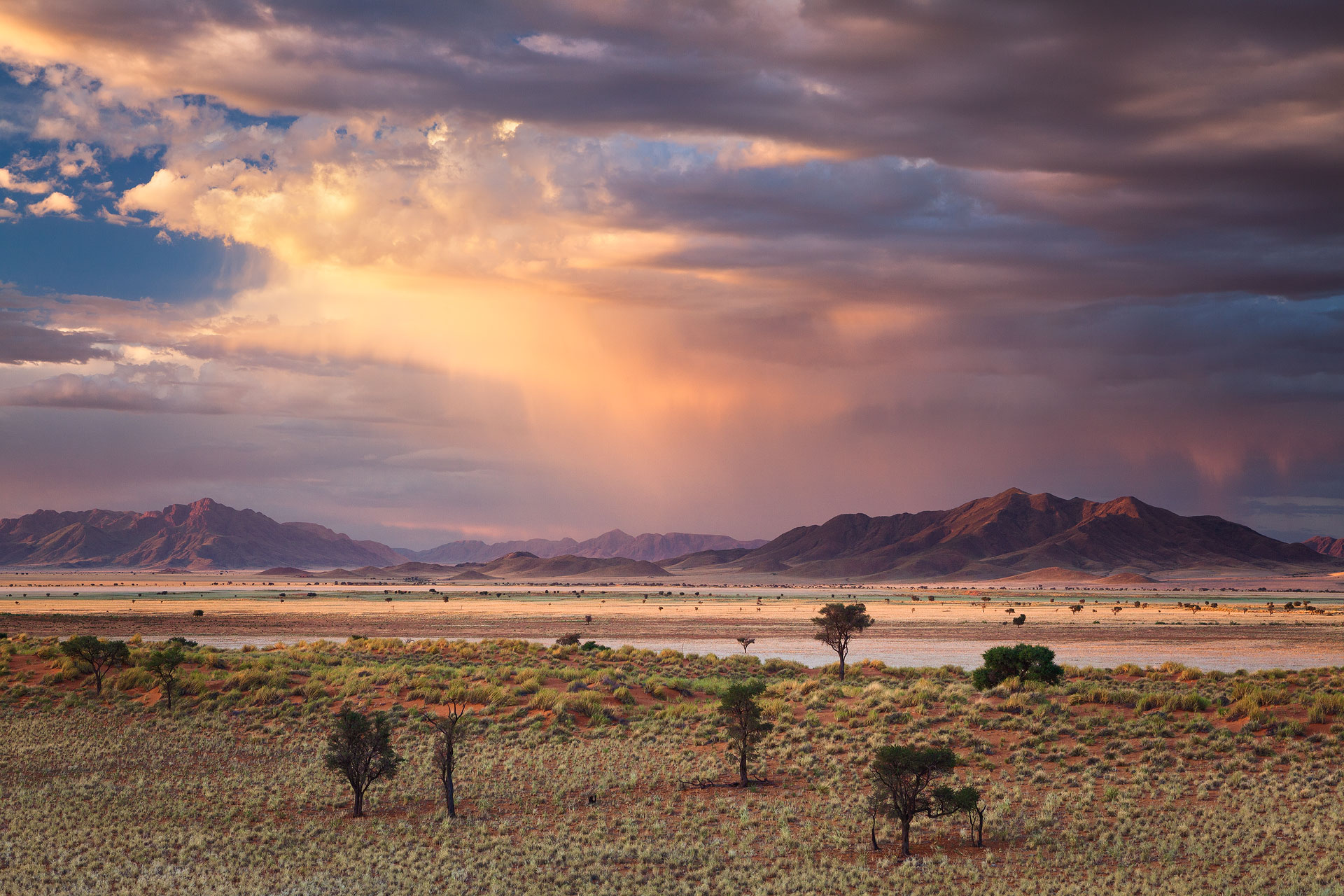
4. Polariser – This simple filter makes a massive difference to vast landscapes. It helps to improve clarity when shooting vast scenes. It can be hard to find a lot of contrast in a small area when shooting landscapes with a very long lens – a polarising filter also makes a big difference in such a situation. Want to know more about using a circular polariser? Read this article about polarising filters.
5. Tripod – If you’re serious about landscape photography, always use a tripod. The only exception is during the middle of day in bright sunlight.
6. Return to the same location – This is one of the absolute most important parts of landscape photography; the more you reshoot a place, the better the results will be. People think that shooting something different every day will yield more results, which is true, but you will go home with quantity, not quality.
7. Get there early, stay late – Some of the best light in landscapes is long before sunrise and later after sunset. Make sure you’re in place and ready to shoot at least 45 minutes before sunrise and make sure you stay there until 45 minutes after.
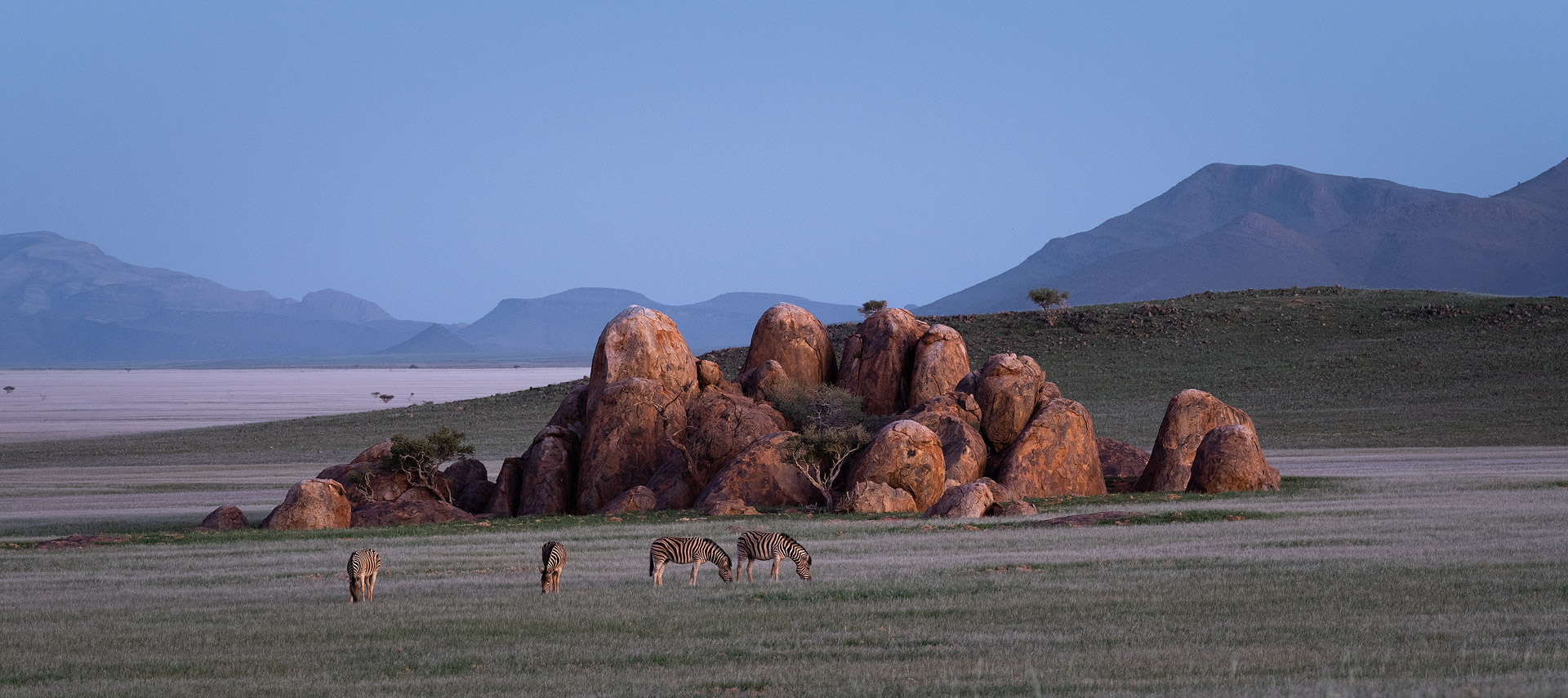
8. Don’t shoot into a harsh sunset/sunrise – We as humans have an obsession with that big bright ball in the sky, but it is only in very rare conditions that one can shoot straight into a sunrise or sunset. Shoot north or south or NW/SW (in afternoon) and NE/SE (in morning).
Where to stay
Properties with campsites
Kanaan is one of the most beautiful properties in the Rand. It has a campsite, but there isn’t much exploring the property allowed without paying for an expensive sunset drive.
NamibRand Family Hideout is probably one of your best bets if you like self-driving. They have three beautiful private campsites. The property has a 4×4 loop you can drive, which offers access to plenty of great viewpoints.
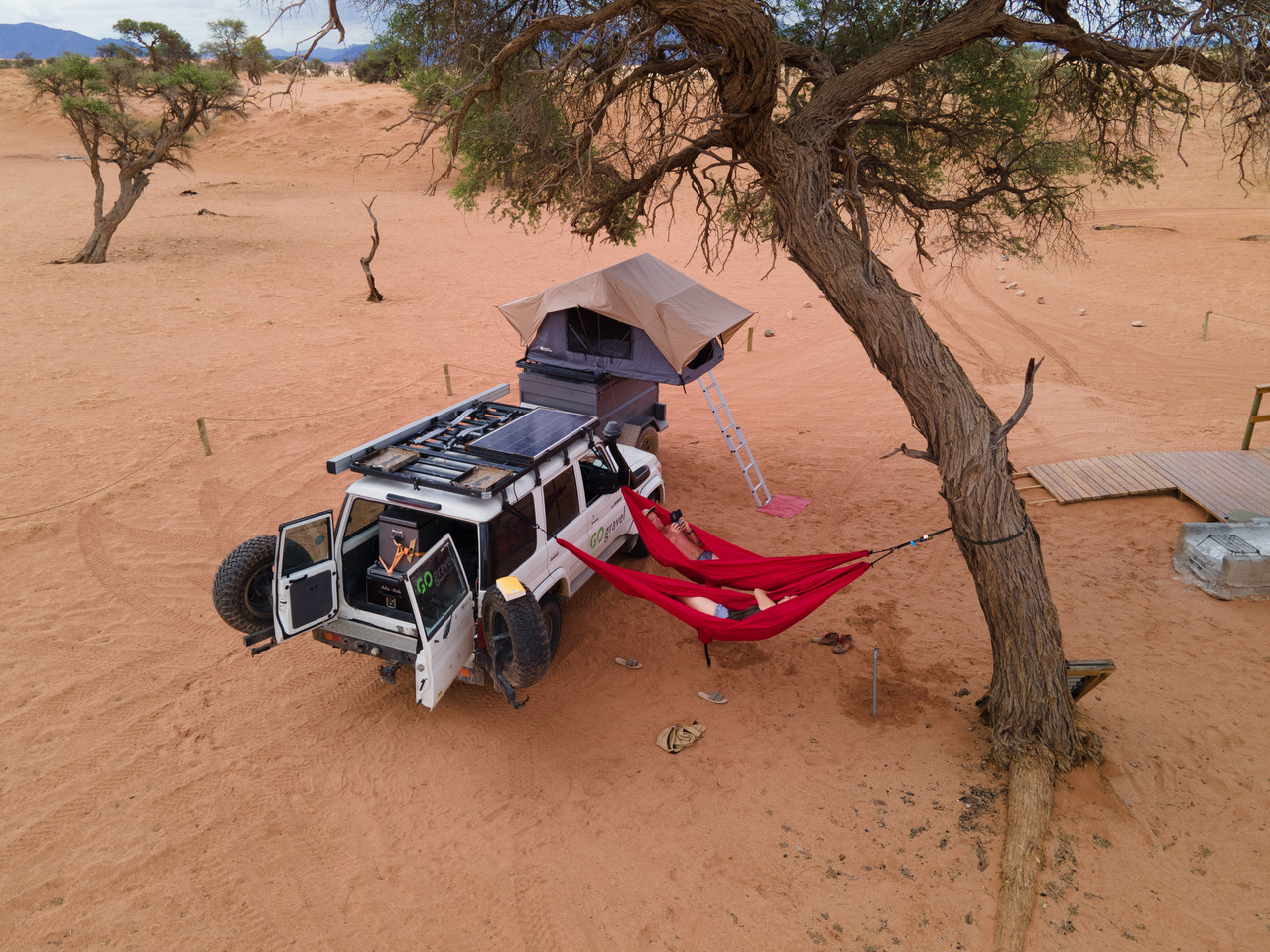
Namtib: Little Hunter’s Rest is run by a German family and they are very friendly to photographers without charging an arm and a leg. They have great hiking routes and they allow guests to explore the farm roads.
Ranch Koiimasis has a great campsite and they are happy for guests to drive the main farm road, which offers some photo opportunities. If you like photographing horses, you will love this property. They have a strong focus on horseback safaris and you will find several large herds of free-roaming horses in the valleys of the farm that make for fantastic photos.
Affordable lodges
Greenfire Desert Lodge is one of the most beautiful properties in the Namib Rand. They have a lodge that offers a very affordable all-inclusive rate, which includes drives.
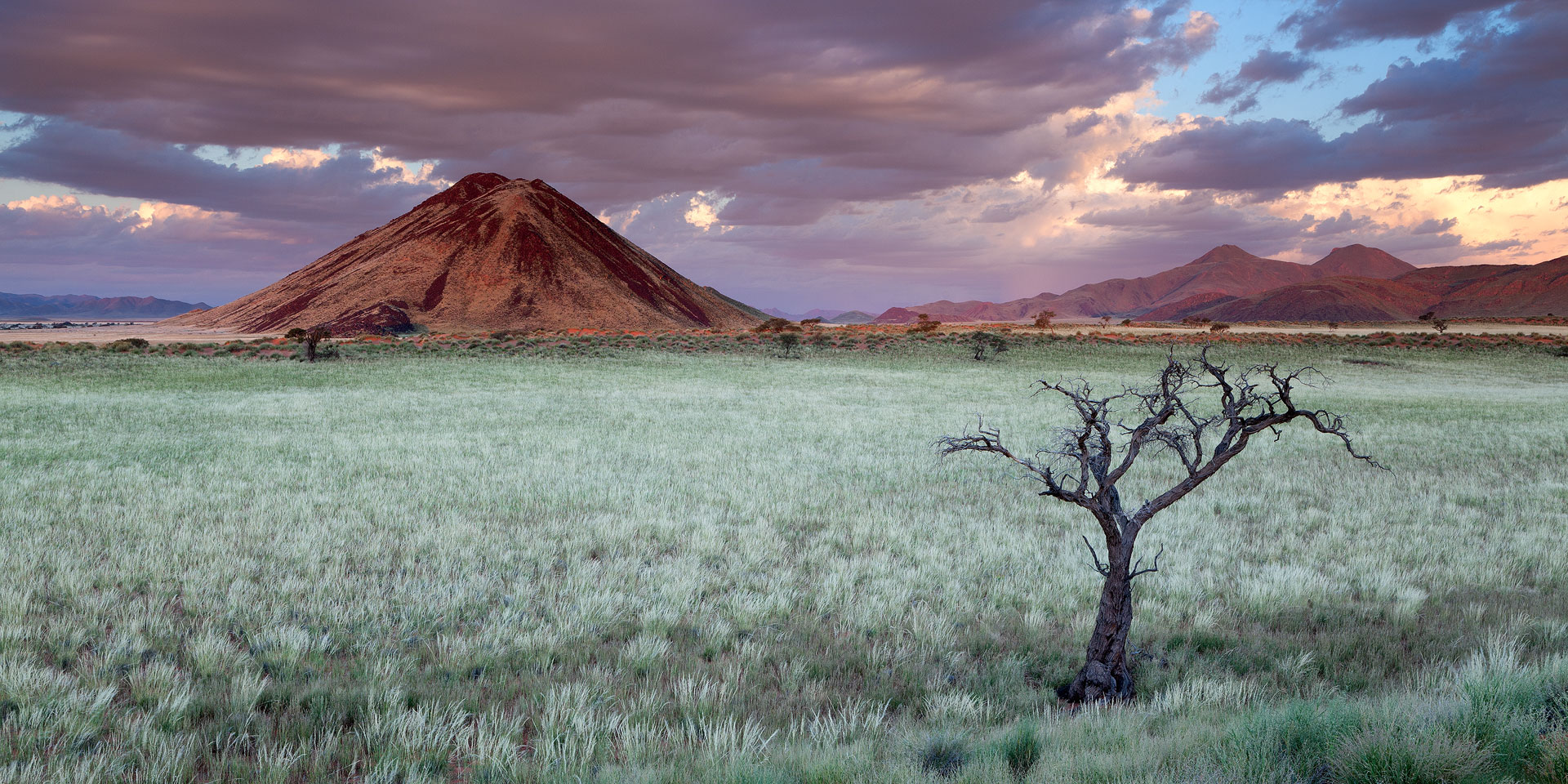
High-end lodges with good summer promotions
Kwessi Dunes is a brand new lodge owned by the South African Natural Selection group. While normally unaffordable to most South Africans, they offer great all-inclusive low-season specials for SADC residents. Subscribe to their newsletter to find out more.
Wolwedans is the foundation of the NamibRand Nature Reserve – they played a critical role in establishing and promoting it. They have some of the highest dune belts and the largest endless plains dotted with lone trees. This lodge also used to be unaffordable to most, but Covid forced them to make attractive deals for locals in order to survive. I am sure that they’ll be doing these special offers in low season for a long time to come.
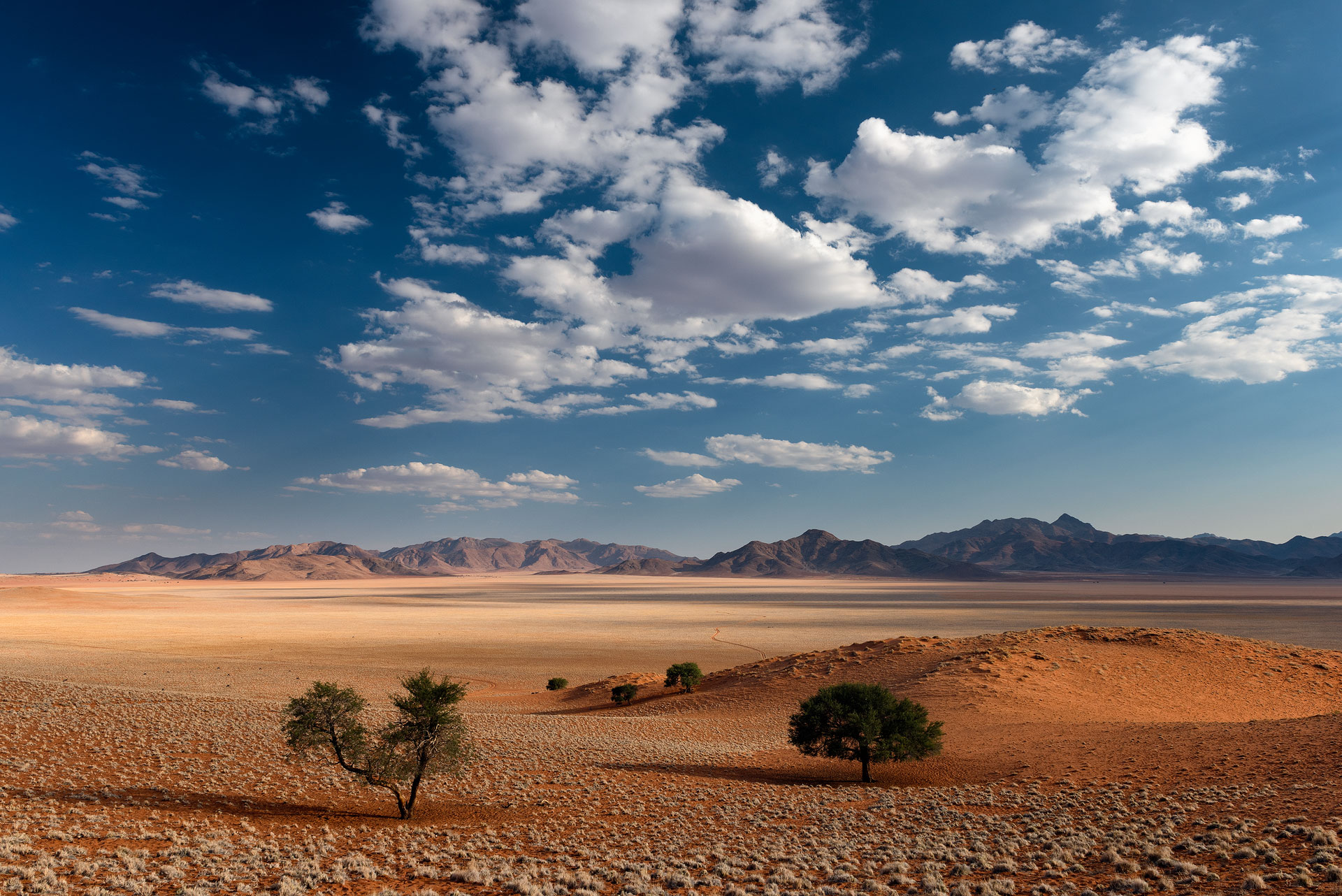
Take-home message
Do not go in the wrong season if your goal is landscape photography.
I cannot overstate this enough. We all get impatient and want to travel, but the Namib Rand is not kind to those who don’t understand its seasons and years. When there is grass, it is one of the most photogenic places in the world. When it’s just sand, rocks and dead grass knolls, it is barely worth a cellphone photo. Do your homework, make sure there is grass and go in the months that guarantee clouds: February, March and April.
For more photography by Hougaard Malan, visit his landscape photography website or follow @hougaard_malan on Instagram.
Over to you
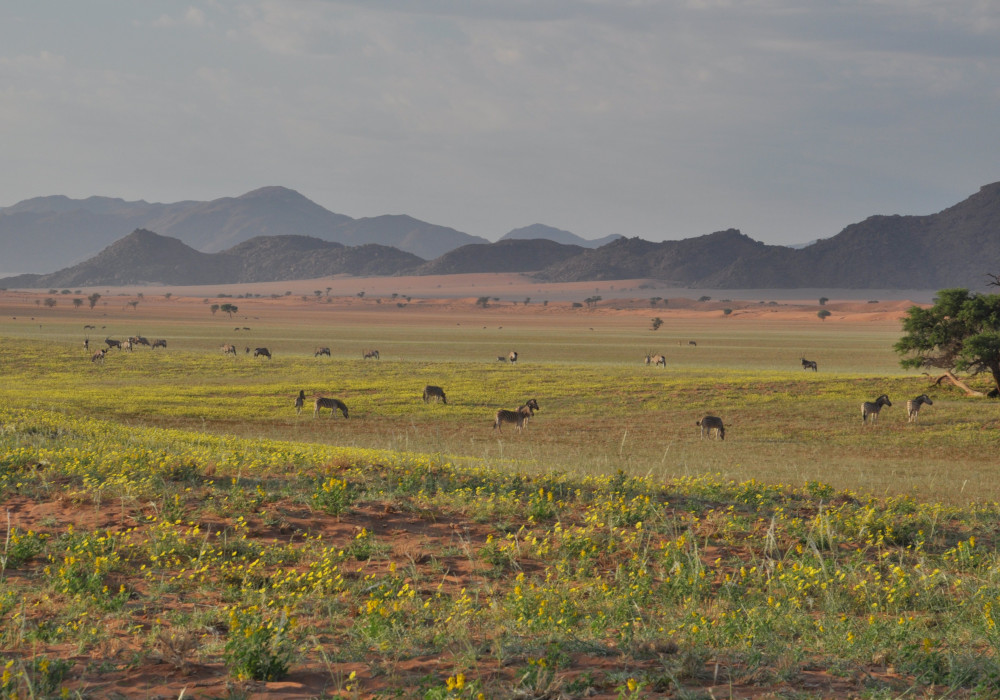

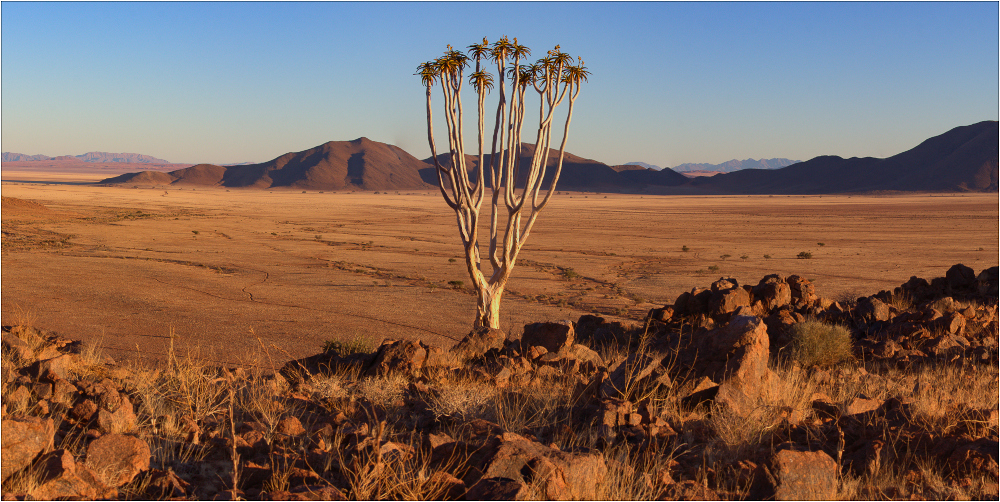
Send pictures of your travels to newsletter@tracks4africa.co.za for a chance to be featured in the Tracks4Africa newsletter.
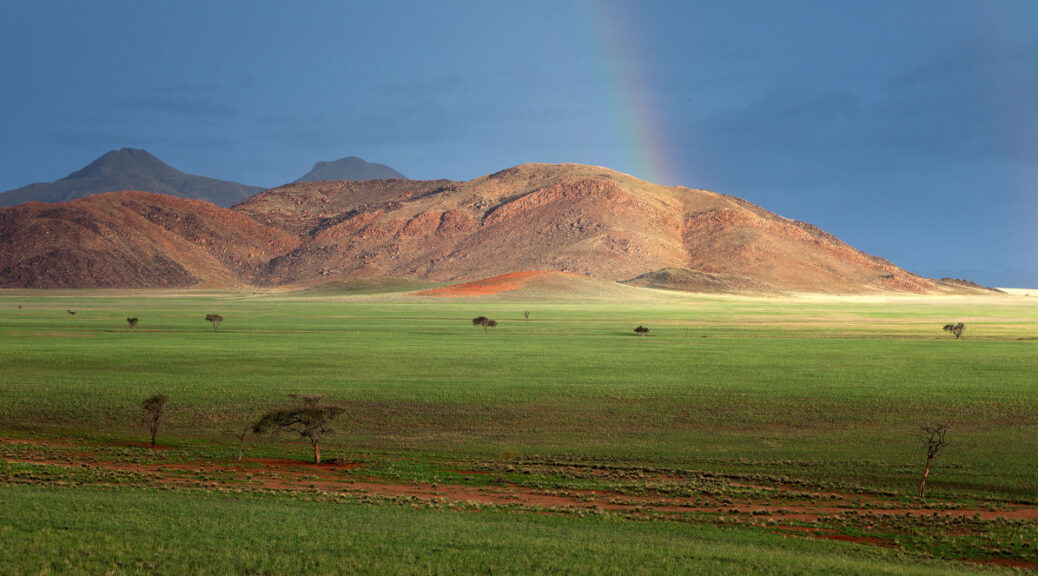

Very interesting. We were there in April and like you say, absolutely fantastic. First time we have seen the sossusvlei with water…. Check out our channel on Utube – Rose Douglas – Explore Africa